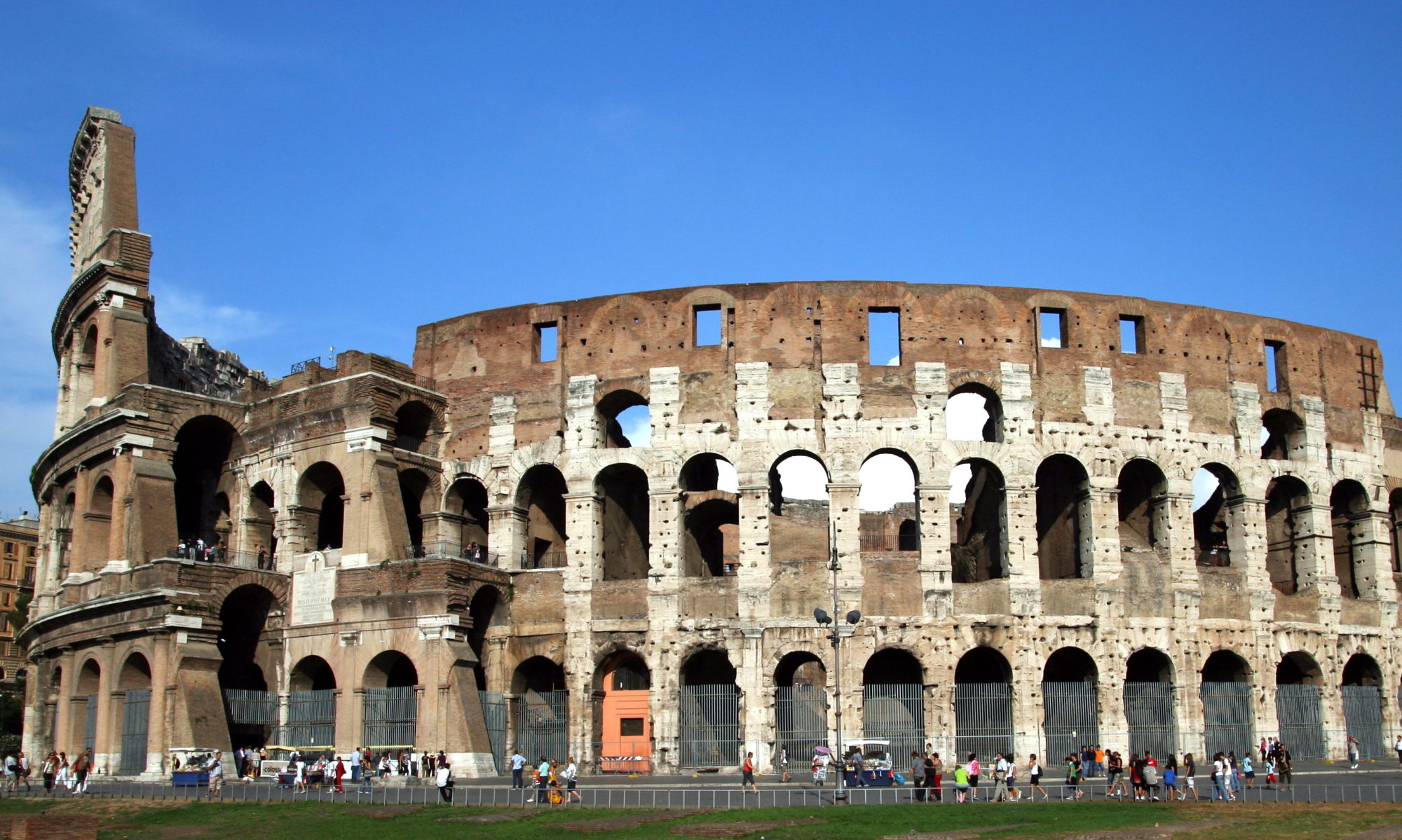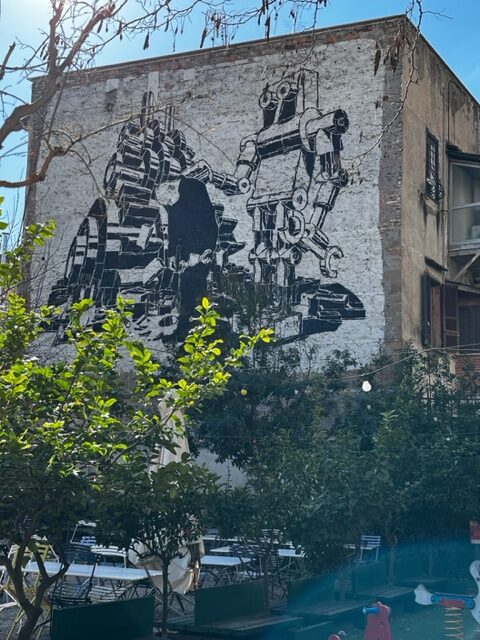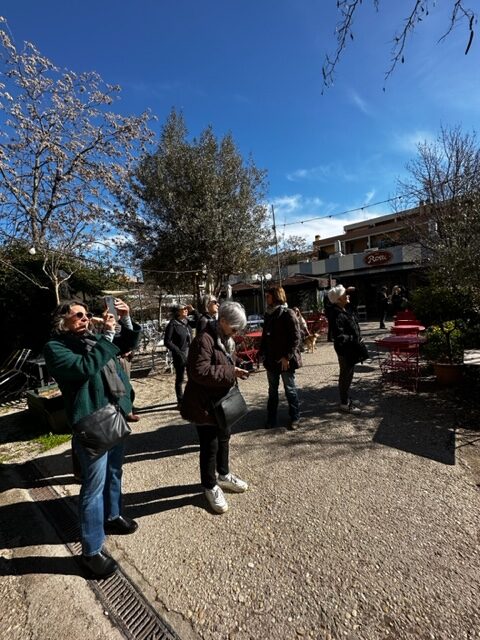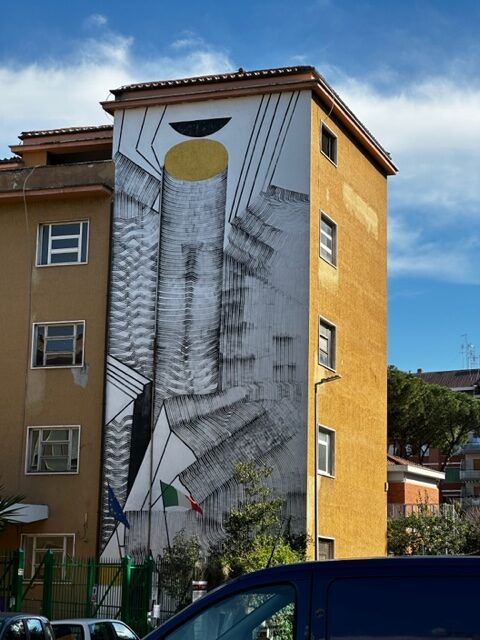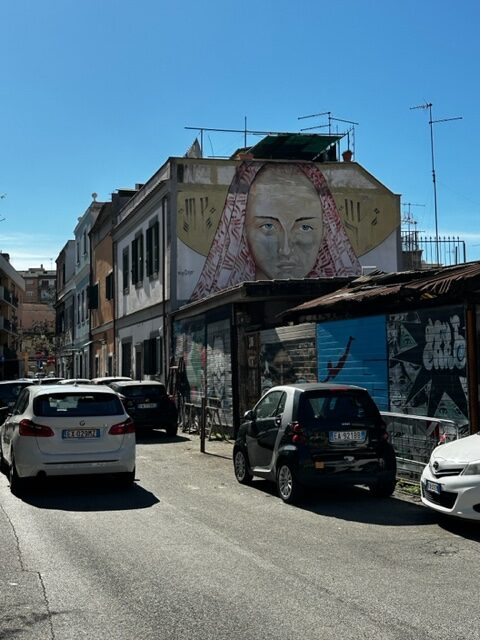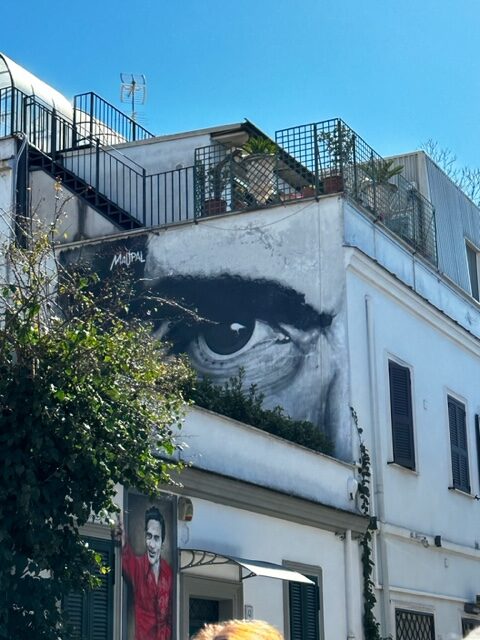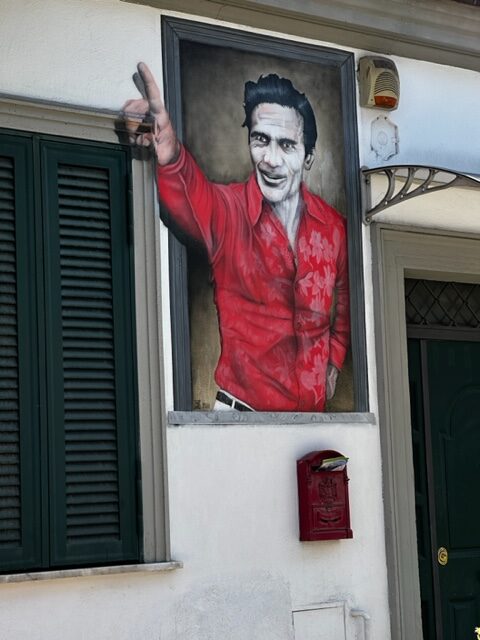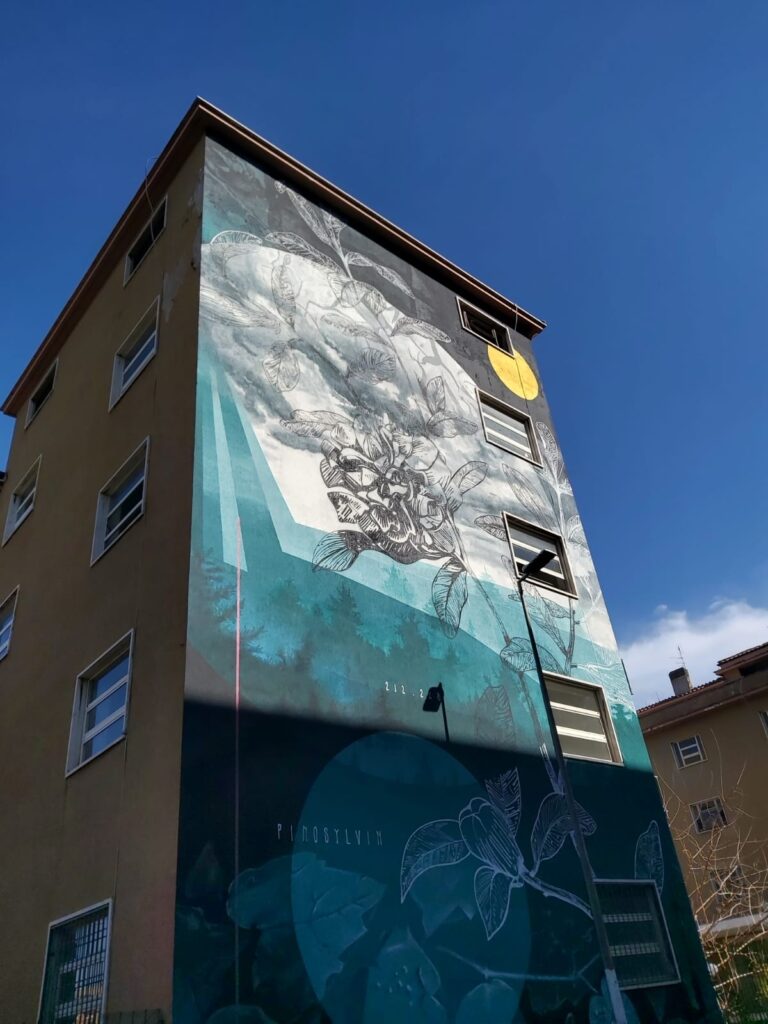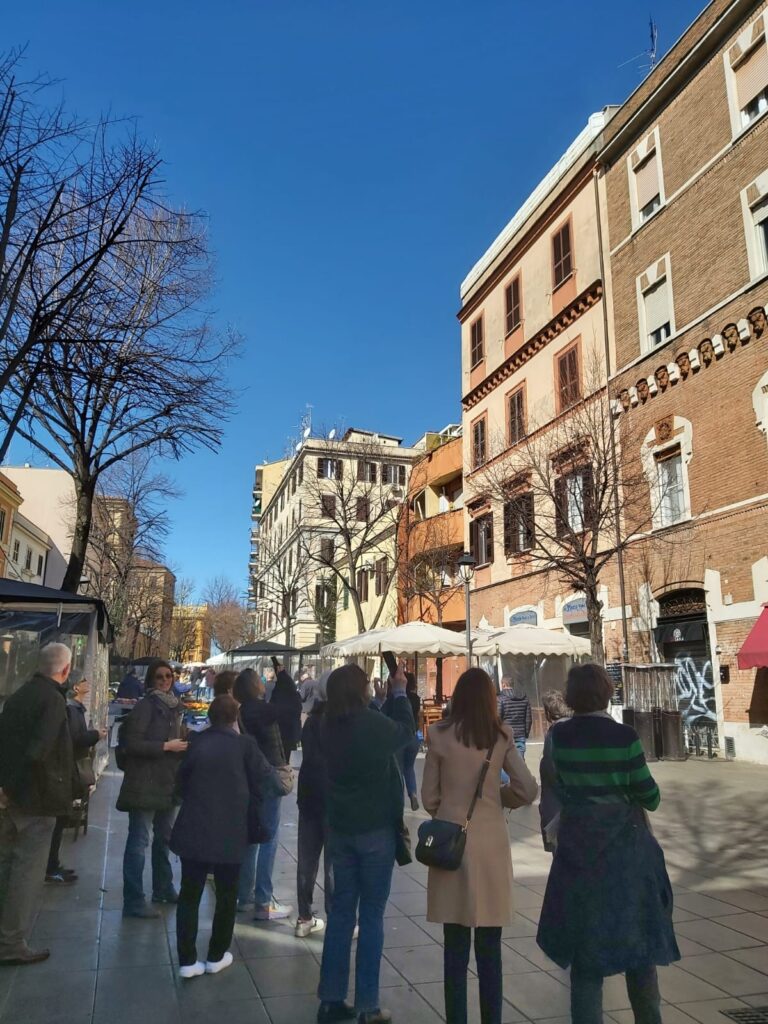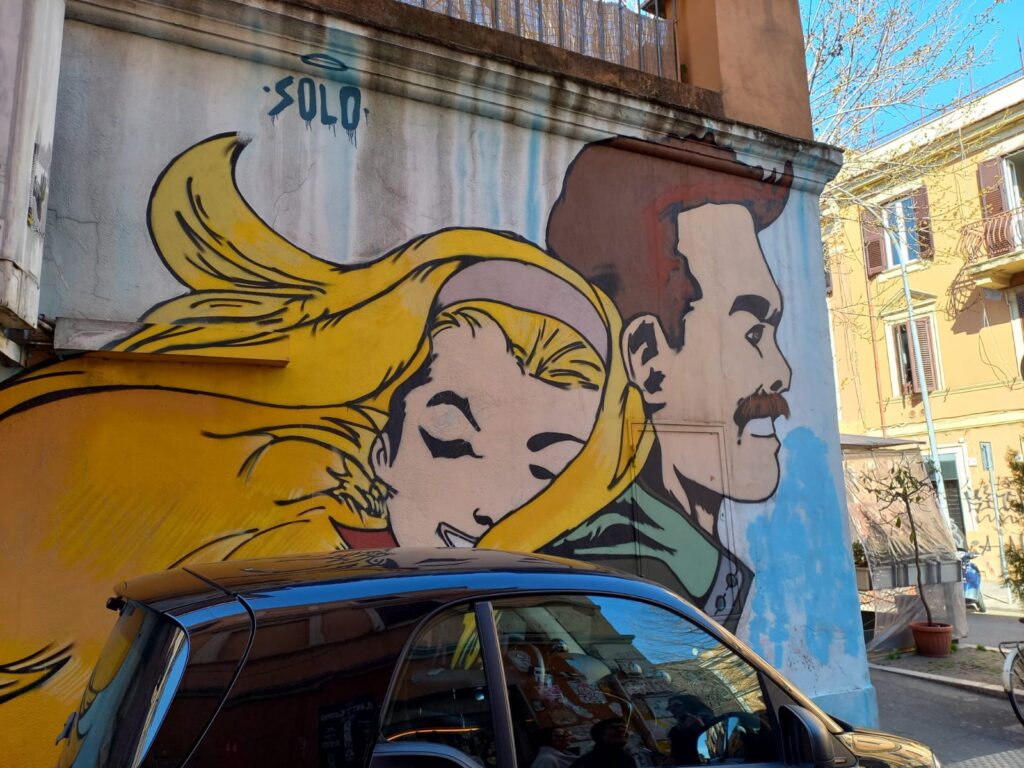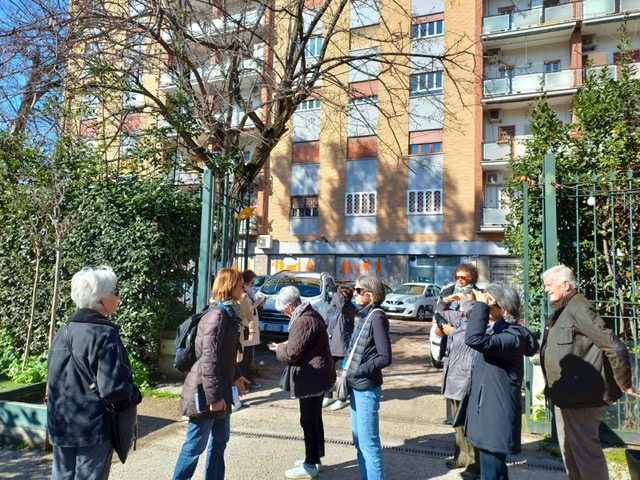On March 4th, members gathered outside the Metro stop of Pigneto, conveniently located in the hub of Pigneto! It was a glorious bright sunny day, and we were eager to learn about the area which was unfamiliar to most of the group!
Silvia, our guide, informed us that the neighborhood’s name translates as “the pinewood”, due to the rows of tall pine trees which originally surrounded Villa Serventi, a historical villa in the area. Pigneto’s triangle-shaped perimeter is bordered by Via Prenestina, Via Casilina, and Via dell’Acqua Bullicante. The neighborhood is also subdivided into three sections with squares and roads dedicated to Italian cities, famous commanders, and geographers.
Until the 1870s the area was occupied exclusively by private villas and farmland, in fact, the roads are so narrow we could see that they had been constructed for horses and carts! Walking around we discovered the private colorful villas and beautiful gardens scattered around the neighborhood. We felt like we were already far from Rome!
At the end of the 1800s, today’s area of Pigneto saw the birth of a series of small spontaneous, and unorganized settlements and the subsequent development of different industrial complexes in the 1900s. It became home to a diverse population of industrial workers as many factories were built there. Today it is incredibly diverse and characterized by an interesting architectural inhomogeneity ranging from liberty to baroque to eclectic. It is home to young University students, who ventured away from San Lorenzo, artists, bohemians, and immigrants from across the globe who rub shoulders with Rome’s timeless old-school.
Pigneto was badly bombed during World War II, like nearby San Lorenzo. In fact, the area features in Roberto Rossellini’s film “Roma Città Aperta”, a portrait of a war-torn city.
In the 1960s Pigneto became a hotbed of left-wing activism and counter-culture with the famous writer and director Pier Paolo Pasolini casting the neighbourhood’s longest and most influential shadow. We were introduced to the most famous bar and restaurant in the area “Necci dal 1924”, also a popular hangout of Pasolini’s, who filmed his first film “Accattone” there in 1961. We also unanimously agreed what a perfect location it would be for one of the Association’s aperitif this summer!!
Walking through the alleys and narrow streets, we admired the incredible street art, which colors stood out even more prominently against the intense blue sky! The vibrant murals everywhere spoke vividly of Pigneto’s past, present, and future!
